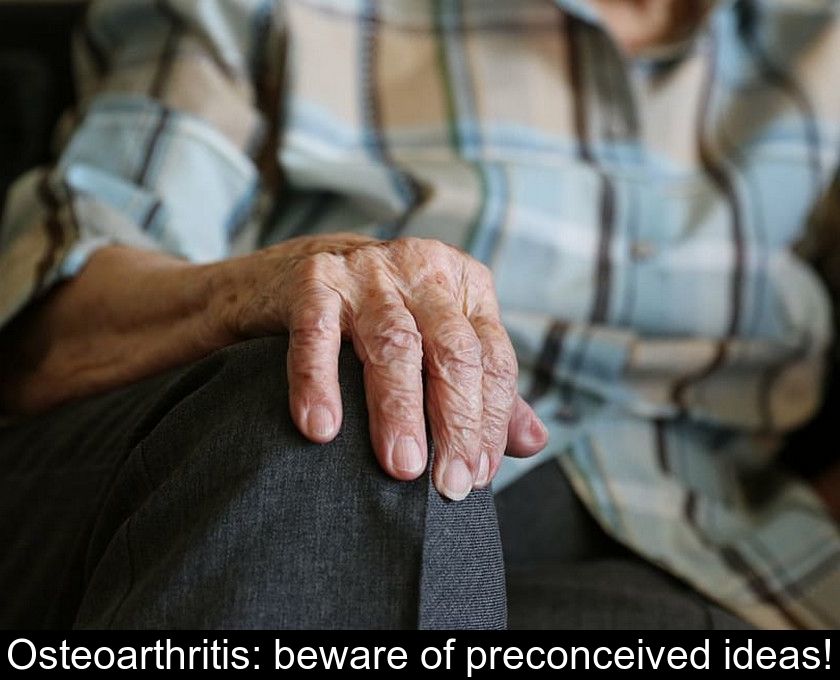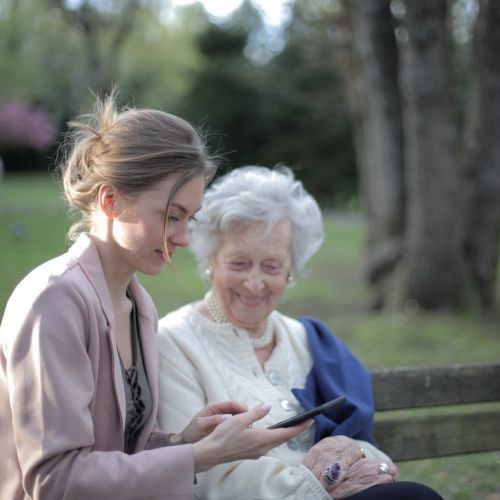Osteoarthritis: Beware Of Preconceived Ideas!
Although osteoarthritis is the most common joint disease in the world, it is still poorly understood. This disabling condition, characterized by progressive destruction of cartilage, manifests itself through pain and loss of mobility. Here are 5 misconceptions to dispel in order to better understand this disease.
She is linked to the normal aging of the joints.
Although osteoarthritis more frequently affects people over the age of 65, it is not a normal sign of joint aging.
65% of seniors over the age of 65 are affected by this joint disease and the number of patients rises to 80% in those over 80 years old. However, not all seniors suffer from osteoarthritis!
Furthermore, some people begin to suffer from knee osteoarthritis as early as age 40. Due to increasing obesity in young people, doctors are even seeing cases of early-onset osteoarthritis at age 30.
Therefore, it is completely false to claim that this condition only affects seniors and corresponds to normal joint aging.
In reality, aging is not the only cause or risk factor for this disease. Heredity, overweight, and joint injuries in obese individuals and high-level athletes can also contribute to the development of this condition.
2- Knees and hips are the most affected joints.
This statement is another one of the 5 common misconceptions about osteoarthritis. In theory, this disease can affect all joints in the body.
In reality, osteoarthritis is rarely seen in the elbow, ankles or wrists and it is true that knees, hips and hands are among the most common locations, with a disabling impact on mobility and irreversible deformities in the fingers.
However, if we consider the entire population, it is in the spine where this joint disease most often manifests. Osteoarthritis of the spine affects between 70 and 75% of people aged 65 to 75. But in this location, the disease is usually silent and does not cause any pain.
3- Pain is proportional to the observed injuries.
Contrary to what is often imagined, the pain caused by osteoarthritis is not proportional to the anatomical lesions observed on X-rays.
It happens that pain and loss of mobility can be disabling for patients even when the lesions do not seem significant on X-rays, and vice versa.
That's why doctors also use questionnaires about the level of pain experienced and the discomfort caused in daily activities such as walking or climbing stairs.
4- Some foods are harmful to the joints.
Maybe you have heard that people who suffer from osteoarthritis should avoid milk and dairy products. The same goes for meat and gluten, which have been pointed out in turn by trendy diets...
But in reality, there is no scientific evidence that certain foods are harmful to cartilage. While it is true that diet can play a role in preventing and relieving joint pain, its effect is mainly related to weight.
Obesity and overweight directly influence joint pain. This explains why patients are relieved when they eliminate certain foods (red meat, starchy foods or fatty dairy products) simply because this change in diet helps them lose a few pounds!
Rather than avoiding any particular food unfairly accused of causing pain, affected patients should balance their diet in order to maintain or regain their ideal weight.
5- Nothing can be done against osteoarthritis.
It is true that there is no treatment capable of curing osteoarthritis. However, it is completely false to assert that nothing can be done to relieve symptoms.
As soon as the disease is diagnosed, patients can adopt a new lifestyle in order to lose a few pounds if they are overweight.
In practice, doctors recommend:
• to eat a balanced diet
• to engage in regular physical activity (between 30 minutes and one hour of physical activity 3 times a week)
• to wear orthopedic insoles to correct posture if necessary
Note: provided that they choose suitable activities that do not cause pain in the affected joints, patients must continue to exercise. Walking, swimming, and all water sports (which reduce stress on the joints) are highly recommended. The idea that one should avoid making physical efforts and overusing one's joints is, once again, a completely false idea!











